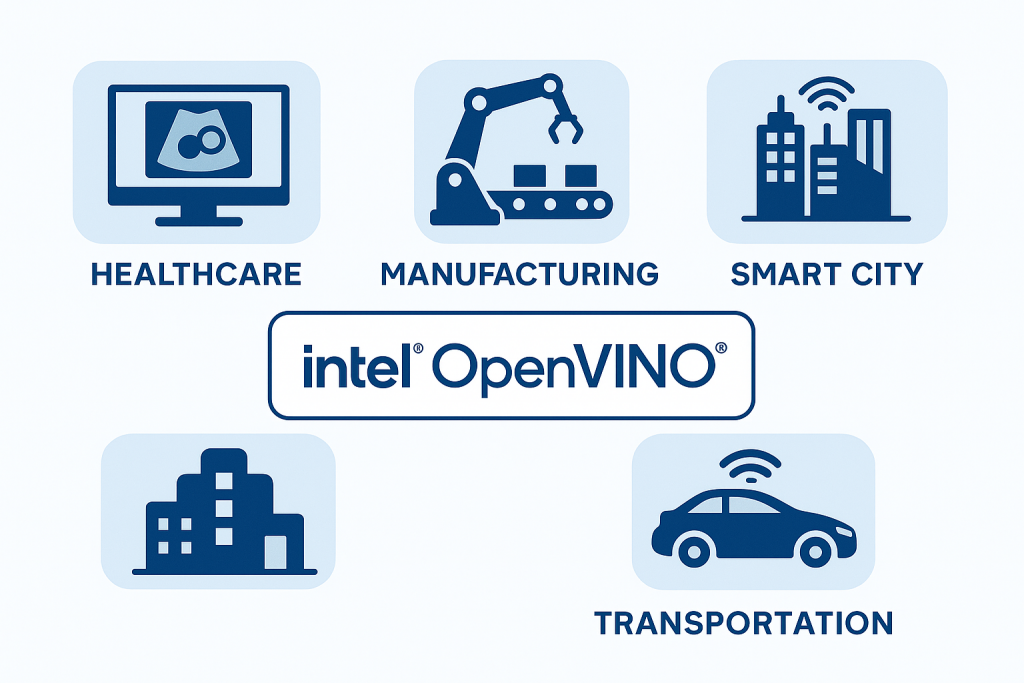Artificial Intelligence is no longer confined to research labs or massive cloud data centers. It has become a defining force in digital transformation, driving innovation across industries, reshaping products, and unlocking entirely new business models. Yet as powerful as AI models have become, organizations face a persistent challenge: how to transition from training complex systems in controlled environments to running them in real time, on real devices, and under real-world conditions. This is where edge AI becomes essential, and where Intel OpenVINO has emerged as a key enabler, making AI inference practical, scalable, and efficient at the edge.

For years, much of the excitement around AI revolved around the cloud. Its unmatched compute power and vast storage provided fertile ground for training advanced models. But reliance on centralized infrastructure has limitations. Latency issues, bandwidth costs, and privacy risks make constant data transfer to remote servers unfeasible for many industries. In healthcare, manufacturing, and autonomous transportation, decisions must be made instantly—often in locations with unreliable connectivity. This urgency has fueled the rise of AI at the edge, where data is processed directly on devices such as industrial cameras, diagnostic imaging systems, or drones in the field. The opportunity is vast, but so is the challenge: running sophisticated models on resource-constrained devices requires intelligent optimization and efficient hardware use.
Intel OpenVINO was created to address this challenge. As a comprehensive toolkit, it optimizes deep learning models for AI inference and deploys them seamlessly across Intel hardware, including CPUs, GPUs, VPUs, and FPGAs. Its value lies in enabling organizations to take models trained in popular frameworks like TensorFlow, PyTorch, or ONNX and run them efficiently on existing infrastructure. By doing so, OpenVINO fundamentally changes the economics of edge AI deployment. Where businesses once relied on costly accelerators or cloud-only models, they can now achieve real-time inference locally, reducing costs and improving responsiveness without compromising performance.
The benefits become clear when applied to real-world industries. In manufacturing, quality control depends on fast, reliable defect detection. Manual inspection is slow and error-prone, but AI-powered vision systems dramatically improve accuracy and speed. With OpenVINO, optimized models can process thousands of images per minute on standard CPUs, avoiding expensive hardware upgrades. In healthcare, radiologists and clinicians rely on immediate results. AI models for tumor detection or anomaly recognition can run locally within hospital systems, preserving patient privacy and delivering real-time analysis. Transportation provides another powerful case: autonomous vehicles and smart traffic monitoring cannot depend on distant servers. By enabling AI at the edge, OpenVINO ensures critical inference happens directly in vehicles and roadside systems, where speed and safety are paramount.

A defining strength of OpenVINO is its flexibility. Unlike platforms locked into narrow hardware ecosystems, it supports a wide range of Intel devices, giving organizations freedom to balance performance, cost, and energy efficiency. Smart cities may run AI inference on CPUs and integrated GPUs already deployed in their infrastructure, while drone manufacturers may prefer lightweight VPUs for efficient in-flight analytics. This adaptability ensures AI fits the needs of diverse industries rather than forcing a one-size-fits-all model. Furthermore, OpenVINO streamlines the path from research to production. Data scientists can build models in their preferred frameworks, then optimize and deploy them with minimal changes, reducing time to market and accelerating AI adoption.
The broader significance of edge AI is profound. With billions of devices generating unprecedented amounts of data, the ability to analyze and act locally transforms how businesses operate. Retailers can optimize store layouts in real time. Energy providers can predict and prevent outages by monitoring infrastructure. Security systems can identify threats instantly, without relying on cloud connections. These scenarios highlight how AI at the edge is not only about efficiency but about enabling entirely new services and customer experiences.
Crucially, the democratizing effect of OpenVINO cannot be overlooked. By lowering hardware and cost barriers, it empowers small and medium-sized enterprises to adopt real-time AI inference capabilities once reserved for large corporations. This levels the playing field, encouraging innovation across the spectrum of business sizes and industries. With OpenVINO, more organizations can tap into the intelligence hidden in their data, fostering a more inclusive and competitive AI landscape.
The success of AI is no longer measured solely by accuracy in controlled environments but by its ability to deliver results in real-world applications. The demand for edge AI continues to grow, driven by latency requirements, data privacy concerns, and the sheer scale of connected devices. Intel OpenVINO addresses this demand by optimizing models for performance across diverse hardware, bringing AI out of the lab and into the environments where it creates tangible impact. By enabling practical, scalable, and efficient AI at the edge, OpenVINO accelerates the journey from experimentation to transformation, allowing organizations to unlock the full potential of artificial intelligence in the moments and places where it matters most.